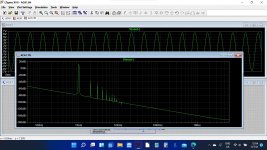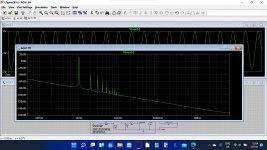... I couldn’t find a guide to reference voltages at various points on the board. Is there anything like that?
Trouble shooting is Step 56 of the build guide. Amp Camp Amp V1.6 Build Guide - diyAudio Guides
I agree with tjw, you likely have a poor solder joint, the thermal changes have found it out. Parts failure are almost unknown.
Alan
So that is all sounding good so far.
Just to confirm so far then.
1/ Supply is correct at 24 volts DC.
2/ The voltage on R1/2/3 and 4 junctions adjusts to 12 volts DC.
Those results show the main DC conditions are correct.
The FET's being hot (which is good) imply that the values of R1/2/3 and 4 are correct.
So checking continuity of input and output wiring is next.
I’ve rewired the outputs and reflowed the input. Still no joy.
Hi Alex, did you see my post a while back?
I'm afraid it's time to take the problem board out and inspect your soldering...
Just a guess here, but I suspect that the big cap (C1) on channel B is not soldered in correctly.
The response you got when you measured between the speaker terminals on channel A is correct, it should increase over a period of time, it is charging the big cap (C1).
If you measure 989 ohms straight away on the B channel, it is likely the cap is not connected, so no output.
85%+ of ACA failures are poor soldering...
Alan
I'm afraid it's time to take the problem board out and inspect your soldering...
You can check easily if the cap is soldered good: solder an external cap in series.
[I have that too]
[I have that too]
I’ve rewired the outputs and reflowed the input. Still no joy.
We'll get there 🙂
With the amp OFF and a speaker connected can you hear any thump or noise from the speaker as you turn the amp on and then off?
Have you done all the continuity tests I detailed? that will test and check for both continuity and also inadvertent shorts.
Amp Camp Amp - ACA
Hi Alex, did you see my post a while back?
I'm afraid it's time to take the problem board out and inspect your soldering...
I have taken the board off and resoldered the C1 Cap
We'll get there 🙂
With the amp OFF and a speaker connected can you hear any thump or noise from the speaker as you turn the amp on and then off?
Have you done all the continuity tests I detailed? that will test and check for both continuity and also inadvertent shorts.
Amp Camp Amp - ACA
We will indeed 🙂
I should also mention that when I first plugged it in, in stereo, it worked on both channels but then stopped within a few seconds.
I will check for the thump when I get a chance and will go back over and check where I am with your list. Sorry for the slowness, real life is continually getting in the way ��
Last edited:
@tjw59 and @Alan4411 thx for your help. I measured resistance and voltage per the guide. There was a bad solder joint on Q2. Fixed that and retested. All good. I reflowed everything, retested and reset the bias. It sounds great in my small den. Qobuz->Roon->Ropieee->Dac->Amp Camp->elac DBR62.
Thx again!
Thx again!
Another unrelated question for you guys. Assuming a nominal 5 ohms for my speakers, to keep the output of the amp to 5 watts (keeping distortion in check), it seems as though I would need to reduce the 2vrms output of the dac down to about 1 volt or -6db. This assumes a 14db gain from the amp. Does that seem right?
HearingAids I use a dac with that the spec says the output is 2 volts with no ill effect at all. I also when I first built the amp ran it into a 4 ohm test load with pink noise and the dac running all 2 of its volts for about 3 days. So if the concern is hurting the amp - I wouldn’t worry about it. Find a place where your ears and their associated equipment think it sounds good and listen to the music!
Thx. I was trying to keep it under 3% distortion and clipping. I relooked at the imoedance curves for my speakers and would instead call them 6 ohms. With 10db gain, 4 watts ( which should keep me well under 3% distortion) would require 1.5 v in. So a little over -2.25db down on my dac.
The gain depends on the value used for R12 (and R11) and so is about 10db if you have a 10k and 39k2 fitted. The load impedance also alters gain slightly on the ACA, lower impedance and lower gain.
You could always try increasing the 39k2 if you need a little bit more gain, nothing bad will happen.
You could always try increasing the 39k2 if you need a little bit more gain, nothing bad will happen.
What rate of change from 39k would yield what rate of change in gain?
What are reasonable limits?
What are reasonable limits?
Thx. I was trying to keep it under 3% distortion and clipping. I relooked at the imoedance curves for my speakers and would instead call them 6 ohms. With 10db gain, 4 watts ( which should keep me well under 3% distortion) would require 1.5 v in. So a little over -2.25db down on my dac.
It's not so much the rated impedance of your speakers, but more importantly its nature - whether it is mostly resistive or reactive. Single driver speakers or simple 2 ways (preferably with Series XO) will be easier load for an ACA, compared to complex XO 2 -3 way ones.
The other important bit is how sensitive are your speakers - 86 dB, 90 db, or the best case 93 db and above. If you want low distortion you need speakers that can produce at least 93 db @ 1W. Then you'll be fine.
What rate of change from 39k would yield what rate of change in gain?
What are reasonable limits?
The voltage gain G is approximately given by R12/R11 so we have 39.2/10 which is 3.9.
In other words 1 volt in gives 3.9 volts out or 11.8db.
In practice it is a bit lower because of the low loop gain of the ACA and the addition of a load. It is about 10db for an 8 ohm load.
A 56k would give about 13db gain.
Going to 82k would double the voltage gain and the distortion is little changed really.
Try it 🙂
This shows 2v input with 39k2 and 1v input with 82k.
Attachments
- Home
- Amplifiers
- Pass Labs
- Amp Camp Amp - ACA

